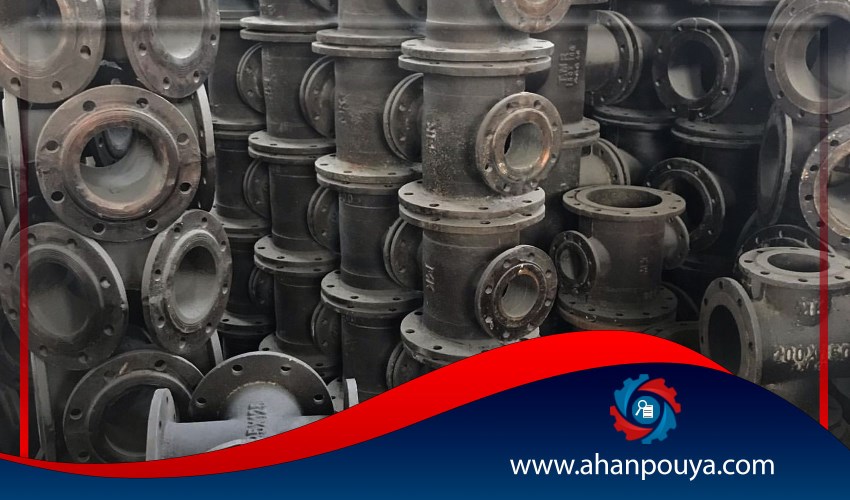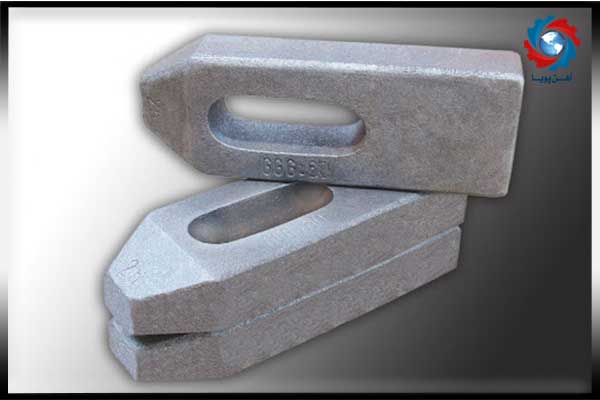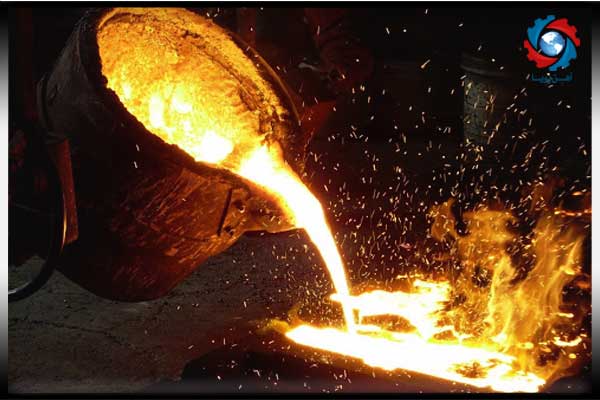
Ferrous alloys are made of iron, carbon and silicon. The element silicon causes several metallurgical effects in this alloy. Cast iron, with the exception of ductile iron, is brittle and has become an engineering material with a wide range of applications due to its low melting point, high fluidity, easy casting capability, high machinability, non-deformability and high abrasion resistance. There are different types of cast iron, one of which is ductile iron or ductile iron, which we will examine in full below.
Unbreakable cast iron is cast iron that contains graphite and contains spherical carbons. This cast iron is called lump cast iron in the United States and spherical graphite (SG) cast iron in England. The amount of sulfur and phosphorus used in this type of cast iron is always less than ordinary cast iron.
Datile or unbreakable cast iron has a range of good yield stress and acceptable ductility, and unlike malleable cast iron, they can be cast in various thicknesses, thin and thick.

1. Its melting point is low
2. It has high casting capability
3. Its machining capability is very good
4. Its abrasion resistance is higher than other cast irons
5. It has very good strength
6. It has good ductility
7. Its toughness is high
Ductile irons are composed of spherical paraphytes. In contrast, gray cast iron has filamentous graphites. Also, the microstructure of ductile iron has graphite grains at the time of casting. Unbreakable cast irons are surrounded by a free ferrite, also called a bovine eye structure, in the berlitic background.
1. Due to the fact that iron is much more erosive than unbreakable cast iron, so for the surface of the iron to prevent wear and erosion is covered with a layer of cast iron.
2. Use in the composition of water and sewage pipes
3. Making all kinds of metal parts
4. Use in casting
5. Use in machine building
6. Making different types of turbine frames

The amount of carbon in unbreakable cast irons normally varies between 3 and 4%. But the most common carbon range in unbreakable cast iron is usually between 3.6 and 3.9 percent. More carbon in brittle cast iron than gray cast iron increases the density in spherical graphites. More carbon than usual, say more than 4.6 percent, allows ductile iron to be converted to floating carbon.
The most common sulfur content in unbreakable cast iron is usually less than 0.03%. Now, if this amount increases, as much as the amount of sulfur used in cast iron has increased, we will need to add more magnesium to globose the graphite. The maximum amount of sulfur use after graphite sphericalization operation reaches a maximum of 0.015%.

Ahan Pouya with more than a decade of best-selling experience, adheres to professional and ethical principles in the field of selling and buying at inside and outside the borders of Iran, helping you in the steel industry.